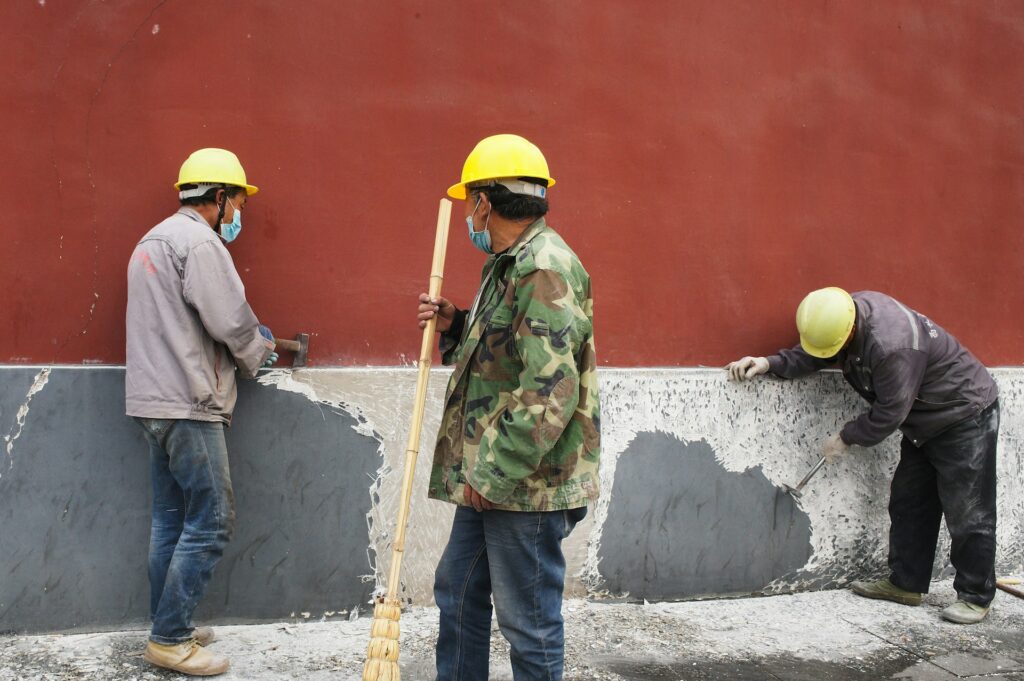Recent immigration policies are increasing labor concerns, as they may lead to labor shortages and increased costs. The combination of deportations and increased enforcement, alongside potential tariffs on construction materials, is prompting construction leaders to wonder what’s next and how they should adapt.
Here’s what you should know.
Immigration Is Reshaping Workforce Strategy in Construction
Specific industries are feeling the pressure of tightening immigration enforcement, and construction is one of them.
Whether you’re a construction COO or project executive, as a senior leader, you must think beyond compliance. Start considering how changes affect workforce stability, timelines, and margins. All of these variables impact the success of individual projects and. the company.
The U.S. Construction Labor Market and Immigration Pressures
Approximately 30% of the U.S. construction labor force consists of foreign-born workers. In some states, like Texas and California, that number jumps to 40%.
Increased Immigration and Customs Enforcement (ICE) enforcement and federal scrutiny have made workforce stability less predictable. Of course, this affects the labor field. However, project planning, cost forecasting, and executive oversight are also at risk.
What’s at Stake for Those in a Senior Construction Leadership Role?
As a senior leader, immigration pressures may result in:
- Delays: Project timelines drag out due to unvetted or undocumented subcontractor labor. In some cases, sites may be shut down following ICE raids on construction sites. This concern can exacerbate other unrelated delay variables, such as poor project scheduling and time management.
- Cost overruns: Labor shortages drive up wages and overtime requirements, which can quickly chew up a project’s budget, further extending timelines.
- Reputation risk: Clients and municipalities are closely monitoring how firms manage their workforce obligations. Once you lose that trust, it’s hard to rebuild it.
- Operational gaps: Weakness in back-office compliance, HR, and legal creates unnecessary exposure.
Executive-Level Strategies to Mitigate Workforce Disruption
Whether it’s immigration-related concerns, labor shortages related to an aging workforce, or job site risks, implementing proactive strategies can help you minimize unnecessary disruption. Here are some recommendations.
Strengthen Internal Workforce Strategy
Here are some tips to strengthen your internal team:
- Hire project executives, HR leaders, and operations pros with compliance and workforce risk experience.
- Create visibility into labor sourcing concerning contractors and subcontractors.
Recruit for Strategic Roles That Drive Stability
Construction firms are turning to recruitment agencies like MRINetwork to find and place:
- Directors of labor strategy
- VPs of field operations
- Project controllers
- Legal/compliance executives with workforce knowledge
The key is to find the right people for the job quickly and efficiently. Access to the talent you need will help you reduce your recruitment and training costs.
Invest in Talent Diversification and Training Pipelines
To build an innovative and resilient workforce, consider the following.
- Reduce reliance on vulnerable labor pools by hiring workforce development leaders. These leaders will help attract, train, and retain top talent. The goal is to invest in a skilled, diverse workforce.
- Build apprenticeship and training functions that create internal pipelines over time. This strategy, paired with skill-boosting training programs, can help you maintain a steady flow of skilled talent.
Why Construction Talent Strategy Is Risk Management
When you invest in talent strategies and actively implement them, you can significantly reduce risk. Mitigate risks and costs associated with employee turnover, workforce stability, skill gaps, and strategic planning. As construction leaders, consider the following.
- A well-structured leadership team can absorb disruption and plan for volatility. This team can focus on proactive construction labor risk management via scenario planning, fostering a culture of resilience, and embracing new technologies.
- Leaders who anticipate workforce shifts have a competitive edge, as they are more flexible and adaptable to change.
- When working with an expert talent strategist, clients gain access to experienced professionals who bring foresight.
How MRINetwork Supports U.S. Construction and Built Environment Leaders
MRINetwork, with a global footprint and deep expertise in U.S. executive search, works with construction firms to help build resilient leadership teams. Here are some benefits of partnering with MRINetwork.
- A team of recruiters who focus on specialties in construction, engineering, architecture, and adjacent industries.
- Experts who have a deep understanding of field operations, project leadership, compliance requirements, and construction labor risk management.
- Gain access to construction executive recruiting strategies that help firms navigate growth, workforce disruption, and operational complexity.
A Smarter, Stronger Future Starts at the Top
As immigration challenges persist, this hurdle highlights the need for a more strategic and agile approach.
Forward-thinking construction firms are investing in leadership that plans for change — not those that focus solely on reacting. MRINetwork construction recruiters are here to help you build the leadership team that keeps your company moving forward.
Contact one of our offices to ensure reliability, even when faced with barriers associated with immigration and workforce risks.

Connect with MRINetwork